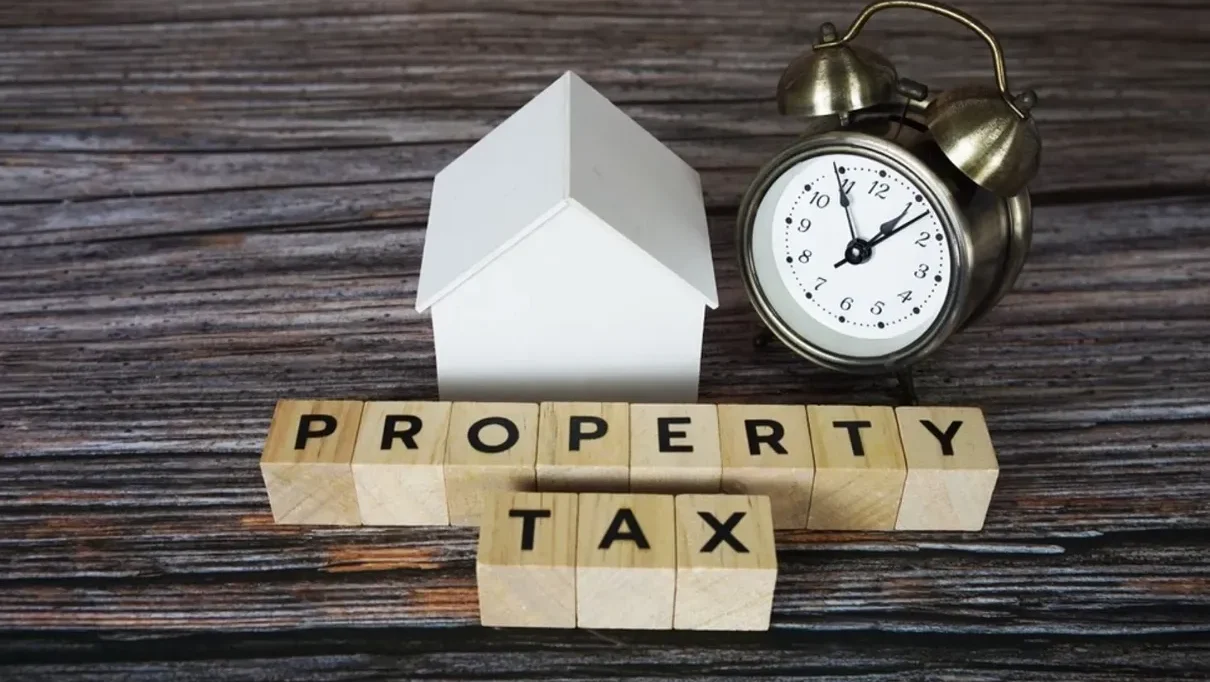
Property taxes are a significant expense for homeowners and business owners, often making up a substantial portion of annual costs. If you believe your property is overvalued by your county appraisal district, you may be paying more than necessary. Protesting your property tax assessment can lead to significant savings, but the process can seem intimidating. This step-by-step guide breaks down the entire process into manageable steps, empowering you to challenge your property tax assessment with confidence. Whether you choose to protest on your own or hire a professional, understanding the process is key to achieving a fair valuation and reducing your tax bill.
Why Protest Your Property Tax?
Before diving into the steps, it’s helpful to understand why protesting your property tax is worth the effort. Property taxes are based on the assessed value of your property, determined by your local appraisal district. This value should reflect the fair market value—what your property would sell for in a typical transaction. However, appraisal districts sometimes make errors, such as:
- Overestimating your property’s value due to outdated data or incorrect assumptions.
- Failing to account for issues like structural damage, outdated features, or market declines.
- Misclassifying your property (e.g., listing a three-bedroom home as a four-bedroom).
- Ignoring exemptions you’re eligible for, such as homestead or senior citizen discounts.
An overvaluation means a higher tax bill, which can strain your budget. By protesting, you can correct these errors and secure a lower assessed value, directly reducing your taxes. For example, lowering a $300,000 assessment by $20,000 at a 2.5% tax rate saves you $500 annually. This guide will walk you through the process to maximize your chances of success.
Step 1: Review Your Appraisal Notice
The first step in protesting your property tax is to carefully review the appraisal notice sent by your county appraisal district. This notice, typically mailed in the spring, details your property’s assessed value for the upcoming tax year. Here’s what to look for:
- Assessed Value: Compare the listed value to recent sales of similar properties in your area. If your property is valued significantly higher than comparable homes, you may have grounds for a protest.
- Property Details: Check for errors in square footage, number of bedrooms or bathrooms, lot size, or property type. Even small mistakes can inflate your assessment.
- Exemptions: Ensure any exemptions you qualify for (e.g., homestead, veteran, or senior) are applied. Missing exemptions can increase your taxable value.
- Protest Deadline: Note the deadline for filing a protest, usually 30–45 days from the notice date or May 15 (whichever is later in some states). Missing this deadline typically means you can’t protest until the next year.
Action Tip: Use online tools like Zillow, Redfin, or your county’s property search portal to check recent sales of comparable properties. If your assessed value seems high, proceed to the next step.
Step 2: Gather Evidence to Support Your Case
A successful protest hinges on strong evidence that your property is overvalued. The goal is to prove that your property’s market value is lower than the appraisal district’s assessment. Here’s how to build your case:
- Comparable Sales: Identify 3–5 recently sold properties (within the last 6–12 months) that are similar to yours in size, age, location, and condition. These “comps” should have sold for less than your assessed value. Use public records, real estate websites, or your appraisal district’s database to find this data.
- Property Condition: Document issues that reduce your property’s value, such as foundation cracks, outdated plumbing, or storm damage. Take clear photos and gather repair estimates to show the cost of fixing these issues.
- Appraisal Reports: If you have a recent independent appraisal (e.g., from a home refinance), it can serve as evidence if it shows a lower value than the district’s assessment.
- Market Trends: Research local market conditions. If property values in your area are declining or stagnant, this can support your case.
- Errors in Records: Highlight any inaccuracies in the appraisal district’s data, such as incorrect square footage or misclassified features.
Action Tip: Organize your evidence in a clear, concise format (e.g., a binder or digital folder). Include a summary table comparing your property’s assessed value to the sale prices of your comps.
Step 3: File Your Protest
Once you’ve gathered evidence, it’s time to formally protest your assessment. Follow these steps to file your protest correctly and on time:
- Obtain the Protest Form: Most appraisal districts provide a protest form online or by mail with your appraisal notice. If not, contact the district or visit their office to get one.
- Complete the Form: Fill out the form with your property details, including the account number, and state the reason for your protest. Common reasons include “market value is too high” or “unequal appraisal” (if your property is valued higher than similar properties).
- Submit by the Deadline: File your protest by the deadline listed on your notice. You can typically submit online, by mail, or in person. Some districts allow email submissions, but confirm this in advance.
- Pay Any Fees: Some districts charge a small filing fee (e.g., $10–$25), though this is often waived for certain protests or exemptions. Check your district’s rules.
Action Tip: Keep a copy of your protest form and any submission confirmation (e.g., email receipt or postmark). This ensures you have proof of timely filing.
Step 4: Prepare for the Informal Review (Optional)
Many appraisal districts offer an informal review before escalating to a formal hearing. This is a meeting with an appraiser to discuss your case and potentially resolve it without a hearing. Here’s how to prepare:
- Schedule the Meeting: If offered, schedule an informal review as soon as possible. Some districts require you to request this separately.
- Present Your Evidence: Bring your comparable sales data, photos, repair estimates, and any other documentation. Clearly explain why your property is overvalued.
- Be Professional: Stay calm and factual, even if you disagree with the appraiser. Your goal is to negotiate a lower assessment.
- Document the Outcome: If the appraiser agrees to lower your value, get written confirmation. If not, you’ll proceed to the formal hearing.
Action Tip: Practice summarizing your case in 2–3 minutes, focusing on your strongest evidence (e.g., comps or property damage). This builds confidence for the informal review and hearing.
Step 5: Attend the Appraisal Review Board (ARB) Hearing
If the informal review doesn’t resolve your protest (or isn’t offered), you’ll attend a formal hearing with the Appraisal Review Board, an independent panel that reviews protests. Here’s how to prepare and what to expect:
- Schedule the Hearing: The appraisal district will notify you of your hearing date and time, usually within a few weeks of filing.
- Organize Your Presentation: Prepare a clear, concise presentation (5–10 minutes) summarizing your evidence. Include:
- A brief introduction of yourself and your property.
- A comparison of your assessed value to comparable sales.
- Photos or documents showing property issues or appraisal errors.
- A request for a specific lower value based on your evidence.
- Practice Your Delivery: Rehearse your presentation to stay within the time limit and sound confident. Anticipate questions from the board, such as why your comps are relevant.
- Attend the Hearing: Arrive early, either in person or virtually (if offered). Bring multiple copies of your evidence for the board and district staff. Dress professionally and remain respectful.
- Understand the Process: The hearing typically involves:
- The appraisal district presenting their valuation.
- You presenting your case.
- Questions from the ARB.
- A decision, which may be announced immediately or mailed later.
Action Tip: Review your appraisal district’s hearing procedures online, as some have specific rules (e.g., time limits or evidence submission deadlines).
Step 6: Receive and Evaluate the Outcome
After the hearing, the ARB will issue a decision, usually within a few weeks. Possible outcomes include:
- Value Reduced: Your assessed value is lowered, reducing your tax bill. Verify the new value on your tax bill later in the year.
- No Change: The ARB upholds the original assessment. You may have options to appeal further (see Step 7).
- Value Increased: Rare, but possible if the district argues your property is undervalued. This is unlikely unless significant errors are found.
Action Tip: Review the ARB’s written decision for accuracy. If you’re satisfied, no further action is needed. If not, consider additional steps.
Step 7: Explore Further Appeals (If Necessary)
If you’re unhappy with the ARB’s decision, you may have options for further appeals, depending on your state’s laws. Common avenues include:
- Binding Arbitration: Some states offer arbitration, where a neutral third party reviews your case for a fee (e.g., $250–$500). This is faster and less formal than a lawsuit.
- District Court: You can file a lawsuit in state district court, but this is costly and time-consuming, often requiring a lawyer.
- State Office of Administrative Hearings (SOAH): In certain states, you can appeal to a state agency for a hearing.
Action Tip: Consult a property tax consultant or attorney before pursuing further appeals, as these options involve higher costs and complexity. Weigh the potential tax savings against the expense.
Additional Tips for a Successful Protest
- Start Early: Begin gathering evidence as soon as you receive your appraisal notice to avoid rushing before the deadline.
- Consider a Consultant: If the process feels overwhelming or your property is high-value (e.g., commercial real estate), hire a property tax consultant. They have expertise in local markets and ARB procedures, often working on a contingency fee (paid only if they save you money).
- Check for Exemptions: Even if you don’t protest, ensure you’re claiming all eligible exemptions, such as homestead, senior, or disabled veteran exemptions. These can lower your taxable value.
- Stay Organized: Keep all documents, correspondence, and evidence in one place for easy reference during the protest and future years.
- Know Your Rights: Familiarize yourself with your state’s property tax laws. Most appraisal districts have websites with guides, FAQs, and protest resources.
Potential Savings: A Real-World Example
To illustrate the impact of a successful protest, consider this scenario:
- Property: A home assessed at $400,000.
- Evidence: Comparable sales show similar homes sold for $360,000, and the home has documented roof damage costing $10,000 to repair.
- Protest Outcome: The ARB lowers the assessed value to $350,000.
- Savings: At a 2.5% tax rate, the tax bill drops from $10,000 to $8,750, saving $1,250 annually.
These savings can accumulate year after year, as future assessments often build on the adjusted value.
Common Mistakes to Avoid
- Missing the Deadline: File your protest on time, as late submissions are rarely accepted.
- Weak Evidence: Avoid relying on emotional arguments (e.g., “I can’t afford the taxes”). Focus on market data and property-specific facts.
- Incomplete Forms: Double-check your protest form for accuracy and completeness.
- Skipping Preparation: Don’t wing the hearing. Practice your presentation and organize your evidence.
- Ignoring Exemptions: Apply for any exemptions you qualify for, even if you don’t protest.
Should You Hire a Property Tax Consultant?
While this guide equips you to protest on your own, hiring a property tax consultant can increase your chances of success, especially for complex cases or high-value properties. Consultants offer:
- Expertise: Knowledge of local appraisal methods and ARB expectations.
- Time Savings: Handling research, filing, and hearings on your behalf.
- Contingency Fees: Many charge only if they reduce your taxes, aligning their interests with yours.
If you go this route, choose a reputable consultant with local experience and transparent fees. Check reviews and credentials, such as membership in the National Association of Property Tax Professionals.
Taking the First Step
Protesting your property tax is a powerful way to ensure you’re not overpaying. Start by reviewing your appraisal notice and comparing your assessed value to recent sales in your area. If you spot discrepancies, gather evidence and file your protest by the deadline. With preparation and persistence, you can achieve a fair valuation and keep more money in your pocket.
For additional resources, visit your county appraisal district’s website or contact their office for protest forms and guidelines. If you’re unsure where to begin, consider consulting a property tax professional for personalized advice.
Disclaimer: Property tax laws and procedures vary by state and county. Always verify local rules with your appraisal district or a qualified professional. This guide is for informational purposes and does not constitute legal advice.
You Might Also Like
Popular Categories
Popular News

Collin County News
McKinney Planning & Zoning Commission Recommends Expansion of Aster Park with 300 New Homes June 13, 2025
Collin County News
Celina Approves $11.87 Million Phase 1 Contract for Wilson Creek Park June 13, 2025
Flower Mound - Highland Village - Argyle
Walmart Health & Wellness Expands Access to Care Across Texas, Including North Texas Communities June 11, 2025
Collin County News
Plano’s Asphalt Overlay Projects Resume, Signaling Continued Investment in Infrastructure June 11, 2025
Collin County News
Celina Greenlights 49 New Homes at The Parks at Wilson Creek June 9, 2025
Grapevine - Colleyville - Southlake
🚌 Carroll ISD Offers Discounted 2025–26 Bus Passes Through July 14 June 9, 2025
Collin County News
McKinney Approves Zoning for 785-Acre Billingsley Development, Paving Way for Major Growth June 6, 2025
Collin County News
Celina Plans 130 New Homes as Growth Continues Across North Texas June 4, 2025










